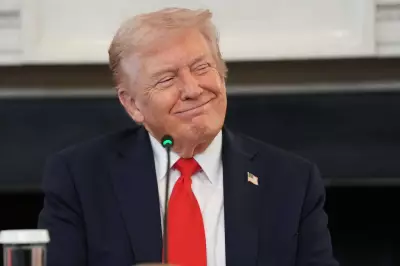
The United States has emerged from its longest-ever government shutdown after President Donald Trump signed a stopgap bill to restore federal funding. The historic 43-day closure paralyzed government services and highlighted fundamental differences between American and Indian governance systems.
What Triggered the Record-Breaking Shutdown?
The crisis began on October 1st when Congress failed to pass the federal budget before the new fiscal year commenced. Under US law, the government cannot spend money without legislative approval, forcing non-essential services to grind to a halt. This marked the 11th shutdown since the current budget process began in 1976.
The 43-day closure surpassed the previous record of 34 days during Trump's last term in 2018-19. The deadlock persisted because Republicans, despite controlling both houses of Congress, lacked the necessary 60 votes in the Senate to pass the President's budget proposal.
Why America's System Breeds Shutdowns
The fundamental difference between US and Indian governance explains why such shutdowns occur. In the United States, the Executive (President) operates separately from the Legislature (Congress). This separation means the President cannot unilaterally pass a budget and doesn't need to resign if their budget fails.
India's parliamentary system prevents such crises because the government remains part of Parliament. The Prime Minister's administration can pass budgets as long as it maintains parliamentary majority. Failure to do so would indicate lost confidence, requiring resignation rather than government shutdown.
The recent impasse broke when eight Democrats joined Republicans to end the stalemate, demonstrating the bipartisan cooperation needed in America's divided political landscape.
Understanding America's Budget Process
The US fiscal year runs from October 1 to September 30, making October 1 a hard deadline for budget passage. The elaborate process begins in February when the President's office submits budget proposals to Congress.
Throughout spring and summer, both legislative houses debate taxation and spending priorities. This year's disagreements included controversies over the Supplemental Nutrition Assistance Program (SNAP), formerly known as food stamps, reflecting deeper ideological divides about government's role.
Concerning State of US Finances
The Congressional Budget Office's latest report reveals alarming fiscal trends. The US recorded a massive $1.8 trillion budget deficit in FY2025, representing 5.9% of GDP—significantly higher than the 1975-2025 average of 3.8%.
Government receipts totaled $5.2 trillion against outlays of $7 trillion. For perspective, India's entire GDP remains under $4 trillion, with government expenditure at approximately $0.6 trillion.
Interest payments on existing debt constitute the government's second-largest expense, highlighting how persistent deficits compound financial challenges. Contrary to some claims, tariffs contribute minimally to revenue, making elimination of income taxes through tariff increases mathematically implausible.
Lessons for India's Governance Debate
This shutdown provides crucial insights for Indians advocating presidential systems. While both systems have merits, America's experience demonstrates how separated powers can lead to governance paralysis.
For developing economies like India, prolonged government shutdowns could prove devastating. The parliamentary system's continuity advantage becomes particularly valuable when stable governance supports economic growth and development programs.
This isn't to claim parliamentary superiority but rather to highlight how system choices involve trade-offs. The US shutdown underscores vulnerabilities that India has successfully avoided through its constitutional framework.
As global economic uncertainties persist, understanding different governance models helps inform India's ongoing democratic development while appreciating its existing system's stability benefits.





